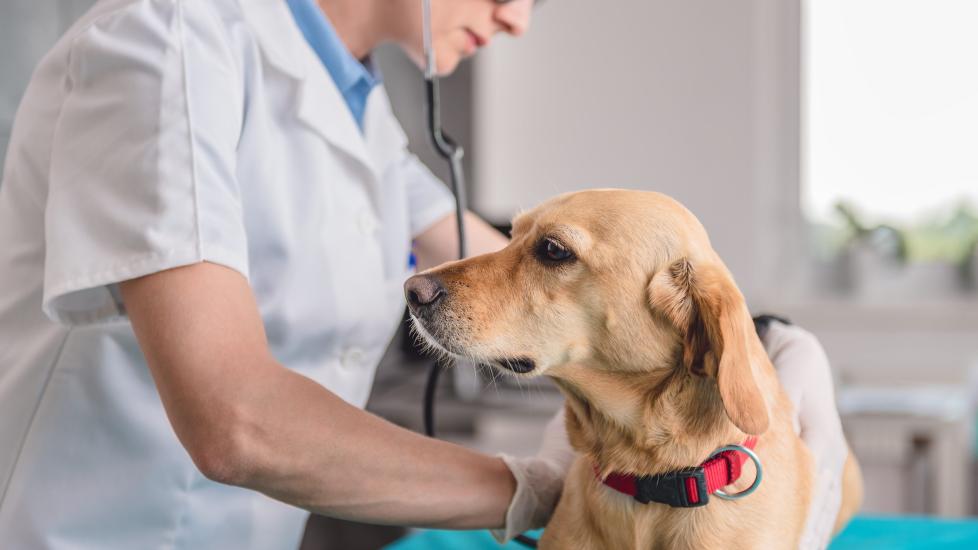In the world of our beloved furry companions, health issues can arise that demand immediate attention. Hemoabdomen, or internal abdominal bleeding, is a serious condition that requires swift veterinary intervention to save your dog’s life. It is crucial for pet owners to be aware of this potentially fatal emergency and understand how to recognize its symptoms, as well as what steps to take if they suspect their dog may be suffering from hemoabdomen. This article aims to provide you with essential information on recognizing, managing, and preventing this grave situation.
Understanding Hemoabdomen:
Hemoabdomen occurs when there is significant blood loss within the abdomen due to ruptured blood vessels, trauma, or underlying diseases such as cancer, immune-mediated disorders, or infections. The sudden influx of blood into the abdominal cavity leads to pain, inflammation, and potential damage to vital organs like the liver, spleen, kidneys, and intestines. Without prompt treatment, shock and organ failure are likely outcomes.
Recognizing Symptoms:
The most common signs of hemoabdomen include:
1. Painful Distension: Your dog might exhibit an unusually swollen stomach accompanied by intense pain upon palpation.
2. Weakness and Collapse: Blood loss can lead to rapid onset of weakness, lethargy, pale gums, and even collapse.
3. Vomiting and Diarrhea: In some cases, dogs with hemoabdomen will experience nausea and gastrointestinal distress.
4. Bloody Stools or Urine: If blood mixes with feces or urine, it could indicate severe hemorrhaging.
5. Abnormal Behavior: A normally calm dog may become anxious, restless, or disoriented.
If you notice any of these symptoms in your dog, do not hesitate; seek veterinary care immediately. Time is critical in treating hemoabdomen effectively.
Emergency Care:
Upon arrival at the vet clinic, the medical team will perform a thorough physical examination and run diagnostic tests, including blood work, urinalysis, X-rays, ultrasound, and possibly exploratory surgery to locate the source of bleeding. Treatment typically involves fluid therapy to stabilize blood pressure, blood transfusions if necessary, surgical repair of damaged structures, and antibiotics to prevent secondary infection. Ongoing supportive care is also required during recovery.
Prevention Tips:
While hemoabdomen often arises unexpectedly, there are measures you can take to reduce the risk:
1. Regular Vet Visits: Schedule routine check-ups to monitor your dog’s overall health and detect early warning signs of disease.
2. Safety Measures: Ensure your home environment is safe from hazards that could cause accidental injury to your pet.
3. Proper Nutrition: Feeding a balanced diet helps maintain strong bones, muscles, and tissues, which contribute to better resilience against injuries.
4. Avoid Overvaccination: Be cautious about unnecessary vaccinations, as certain vaccines have been associated with increased risks of bleeding disorders.
5. Monitor Medications: Keep track of all medications given to your dog and consult with your veterinarian regarding possible side effects.
6. Regulate Exercise: Too much or too little exercise can impact a dog’s health, so find the right balance according to breed needs.
7. Spay/Neuter Early: Consider spaying or neutering your dog at an appropriate age to help control hormone-related conditions that may increase the likelihood of bleeding problems.
Conclusion:
Hemoabdomen is a dire condition that demands urgent action. By staying vigilant for signs of trouble and seeking professional assistance promptly, we can give our pets the best chance at overcoming this crisis. Regular communication with your veterinarian and proactive preventive strategies go a long way in ensuring the longevity and happiness of our four-legged friends. Remember, knowledge is power—educate yourself on the intricacies of your dog’s healthcare to ensure a healthier future together.
